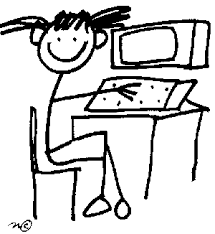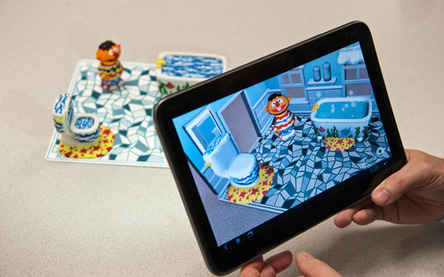
By: Andrea Chouhan
“For students to succeed in the coming decades, they must also learn to be creative, think critically, communicate, and collaborate.” New literacies of information, media and technology skills are additional skills that are vital for 21st Century Learning. Young children are already self-learning how to digitally think critically.
Let’s face it-children and students crave technology. Technology grabs their attention, is exciting and is engaging in many ways. Other than handheld blinking light toys, 2- 3 year olds first technology is the iPod or iPad. Its ease of use and simple directions are learned quickly. Young children learn that if they touch the screen-something exciting will happen. Sounds and animation are a given. This interactive technology wins against watching a cartoon on t.v.
The next type of technology that young children interact with is laptop computers. Like the iPad, it is handheld and interactive but in a different way. The computer allows a child to learn by searching the internet, using the keyboard to type letters and words, and using the mouse to click and drag objects on the screen.
All the above technologies foster learning by reaching out to so many learning styles: tactile, visual and auditory. Students today are influenced by the media-rich and instant technology based environment. Technology provides immediate, fast, engaging, and dynamic learning experiences. Students’ methods of learning are different than earlier generations. Students collaborate, network and communicate via technology, like Twitter, blogs, texting and Facebook. They learn online and rely on digital media for information and socialization. They crave this technology, just like prior generations craved the radio and talking on the home telephone.
It almost seems unfair that children have such easy access to technologies that were not even created when we were in high school. This brings up the fact that these children have the opportunity to learn more efficiently, than we did as children.
“Today’s students need to be prepared for life in a world that will require new skills. That need puts schools at the forefront of technology adoption and education.” In order for teachers to meet students “where they are at” schools must create a learning environment that inspires students to attain the 21st century skills that society demands of us. The classroom should be student-centered instead of teacher centered. In a student centered classroom, learners are engaged in meaningful conversations, interactions with technology and group-based tasks. The direction of learning is facilitated by the teacher, as opposed to being dogmatic about covering specific standards. Long gone should be teacher-centered classrooms, where the teacher stands in front of the classroom and talks while the students take notes and listen. Who actually likes to sit and take notes anyway? This is not a conducive style of learning for most people. This requires tough change, which begins with the school and then the teacher. This change begins with integrating and aligning technology within curriculum, instruction, learning standards, teacher professional development and student assessment. In order for schools, teachers and parents to nurture student learning, they must learn about these new technologies. Just as teenagers acquire more knowledge from the internet than they do their parents, we adults need to follow their example. To start with, I encourage you to investigate some of the new technologies that I have discovered. A simple Google search provided me with knowledge on the following: Augmented reality learning, iStation computer assessments, Animation-ish software. By clicking on the links below, you can begin your journey towards critical and creative thinking. Can you use these new technologies? Can your child or student use them? If so, how? Enjoy your learning journey!

References:
e-book, “21st Century Learning”: Tech & Learning Online Magazine http://newbay.ebookhost.net/tl/lenovo/1/index.php?e=41&open=1
;
Computer-based Reading Assessment- http://www.istation.com/Assessment/ISIPEarlyReading

Animation-ish Graphic design Software for children- http://shop.fablevisionlearning.com/animationish/fa/shop.detail/productID/2542/

Letters Alive, Augmented Reality 3-D Software for the Whiteboard http://www.logicalchoice.com/archive/archive/augmented-reality-for-teaching-learning/letters-alive-curriculum-pre-k-k/

http://www.howstuffworks.com/augmented-reality.htm

http://www.scoop.it/t/augmented-reality-in-education-and-training

http://popartoys.com/2011/05/3-d-interactive-augmented-reality-childrens-book-series-popar-debuts-at-the-new-york-international-book-fair/

Interesting Parenting Article: http://www.psfk.com/2010/10/the-digital-birth-of-the-modern-child.htmly
























